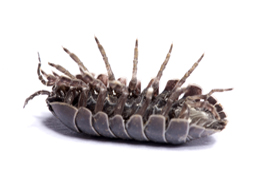
June 17, 2017

Source: Bigstock
Before I read my book about woodlice, I thought I had a fair-size vocabulary, and was astonished to discover how many words relating only to woodlice I did not know. Of these I could give many examples. I knew of pencils, of course, and penicillin, but not of penicils. These are stiff hairs on the mandibles of woodlice, and vary in number among the various species. Whole sentences, before I read the book, would have been utterly incomprehensible to me:
The tergites of the pereion and pleon are called pereionites and pleonites respectively.
Unlike when bureaucrats and managers employ language that I do not understand, I realized at once that here my incomprehension was caused by my ignorance, not by the author’s wish to obfuscate or deceive. Somehow you can tell.
Still, I had a little fun with the vocabulary, for example with the basipodite of the uropod, so different from the expodite of the pleopod. I imagine the basipodite engaged upon a furious theological controversy with the expodite about, say, the difference of the epimeron of the pleonite from that of the pereionite, and the nature of the separation of the tergite from the sternite. I am afraid I can never think of ammonites without thinking of them as a biblical tribe that rose up and smote the trilobites (or was it the other way round?).
Of woodlice in general, the author writes:
There are certain types of habitat to which they are extremely well-adapted and in which they play a significant part as members of the biological community.
A little later, the author describes all the predators and parasites that prey on them in their community, and even their inclination to cannibalism. Therefore, to adapt Pope very slightly:
Know then thyself, presume not God to scan;
The proper study of woodlice is Man.